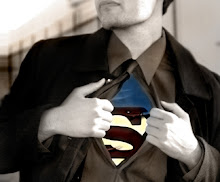He also suffered from a rare perceptual disorder known as Synesthesia, which caused his senses to be bizarrely intertwined.
...
These images that populated S's head were so powerful that they felt at times indistinguishable from reality. "Indeed, one would be hard put to say which was more real for him: the world of imagination in which he lived, or the world of reality in which he was but a temporary guest," Luria wrote. All S had to do was imagine himself running after a train to make his pulse race, or envision sticking his hand in a hot oven to make his temperature rise. He claimed even to be able to abolish pain with his images: "Let's say I'm going to the dentist... I sit there and when the pain stats I feel it... it's a tiny, orange-red thread. I'm upset because I know that if this keeps up the thread will widen until it turns into a dense mass... So I cut the thread, make it smaller and smaller, until it's just a tiny point. And the pain disappears."
But while numbers were brought to life by S's Synesthesia, he had trouble understanding abstract concepts and metaphors. "I can only understand what I can visualize," he explained.
If thinking about the word "coffee" makes you think about the color black and also about breakfast and the taste of bitterness, that's a function of a cascade of electrical impulses rocketing around a real physical pathway inside your brain, which links a set of neurons that encode the concept of coffee with others containing the concepts of blackness, breakfast, and bitterness. That much scientists know. But how exactly a collection of cells could "contain" a memory remains among the deepest conundrums of neuroscience.
Tuesday, January 24, 2012
Subscribe to:
Post Comments (Atom)


No comments:
Post a Comment